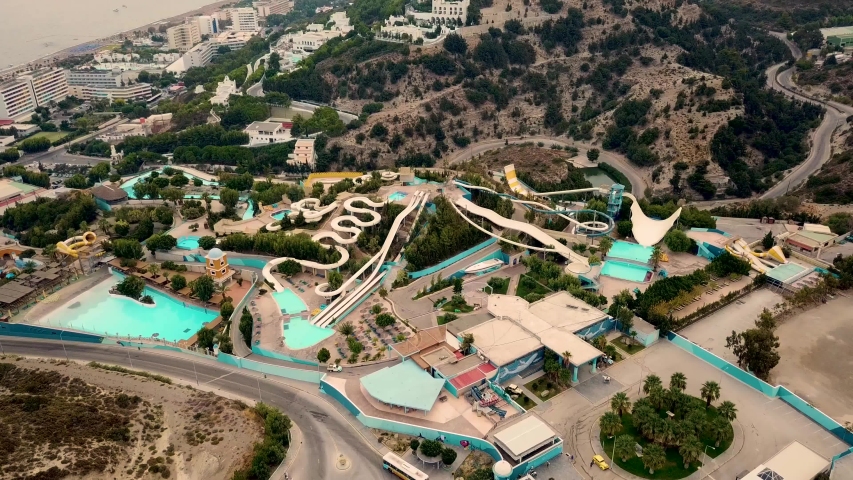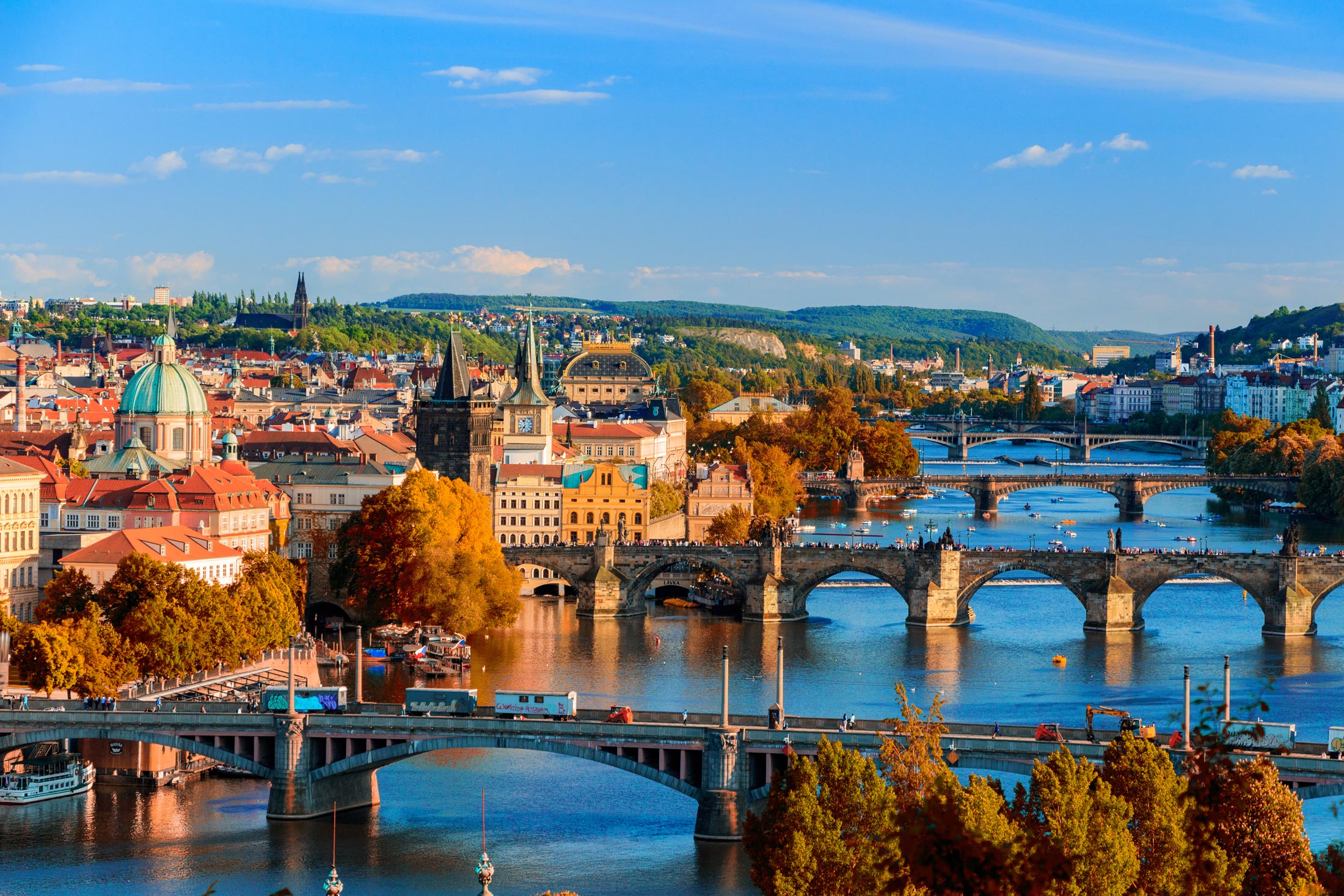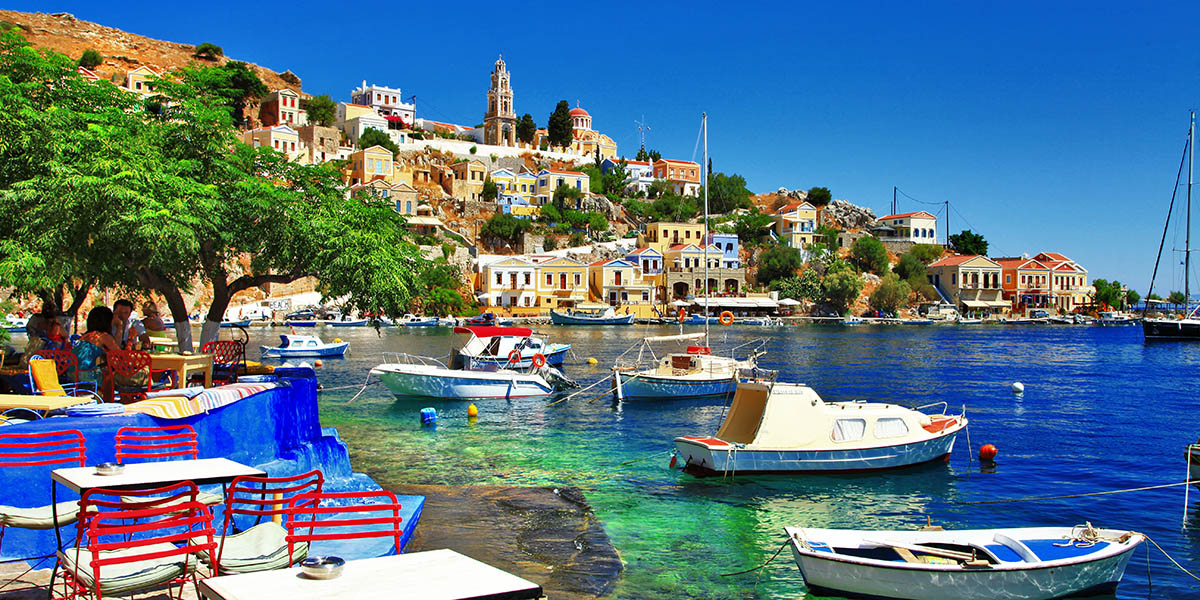
Rhodes - The kiss of two seas
Somewhere in southeast Europe you find Rhodes Island, it is the fourth largest island of the Greek islands and has a surface of 1,390 square kilometers. Rhodes has a very interesting history out of which remain many objects to be seen today.
The island is mountainous with Akramytis (823m) in the southwest, Atavyros (1,215m) in the middle and Profitis Ilias (800m) in the north. The remaining area is not big but very green and Rhodes has many beautiful sand and stony beeches.
Rhodes has a Mediterranean climate with an average temperature around 19 degrees C. The winters are gentle and summers cool due to the constant northeast winds all summer long. The amount of sunny days lays around the 260, that’s why Rhodes is called the sun island.
Let's start from the main parts of this island:
1. Lindos- The ancient city-state of Lindos experienced great naval and cultural prosperity. Home of the savant ruler Cleovulus, it was admired for its wealth, beauty and strategic position. Lindos has been home to great artists, such as Chares, designer and sculptor of the Colossus of Rhodes, Lysippus, Pythokritos son of Timocharios, who along with Athinodoros and Agisandros created the Nike of Samothrace and the Laocoon Group, as well as to the historiographer Evagoras of Lindos, Timachidas, author of the famous Chronicle of Lindos and the poet Cleobuline.
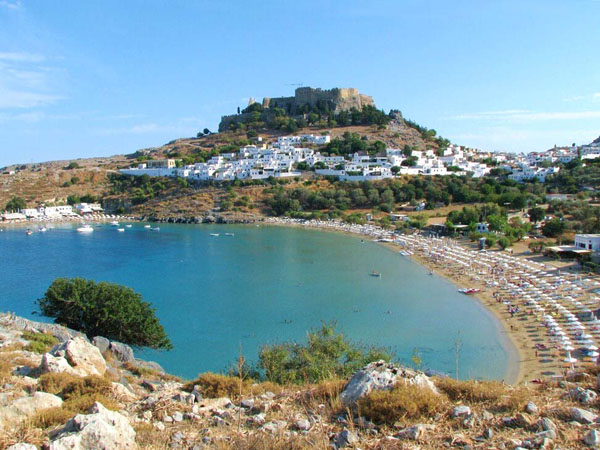
2. Ancient Kamiros - Kamiros was one of the three great ancient cities of Rhodes that reached its heyday in the 6th and 5th Century BC, thanks to its developed agricultural economy. The ruins of the city and neighbouring necropolis were uncovered in 1859 in what had over the centuries, become a wooded area. Its grand public buildings, the Agora, temples, private residences and the Acropolis at the hilltop, witness the glamour and wealth of ancient Kamiros.
3. Ialyssos- Ialysos (also known as Trianda), the birthplace of many Olympic Champions, featuring magical sunsets and an incredible tourist infrastructure, a cradle of civilization, a place of worship, sports and entertainment, was one of the three famous ancient cities of Rhodes. Today’s visitors may see the ruins of the ancient acropolis and monastery, in their restored version of the interwar period, upon an initiative by the Italian government and at a time when the island was under Italian Rule. The visitor’s steps follow the path of the Passion, with stations along the cypress-clad trail to bring to mind the Passion of Christ during his ascent to the Calvary.
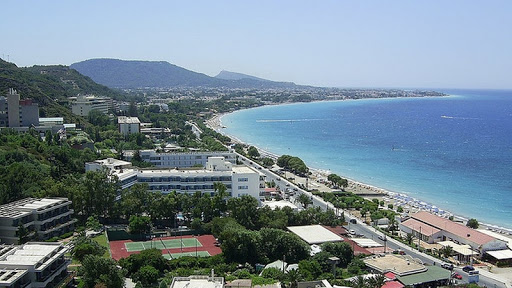
4. The Museum Of Modern Art- The Museum of Modern Greek Art presents extensive painting and engraving collections as well as numerous sculptures, drawings and documents of historical value. The works of engraving and painting form a comprehensive collection of Greek art of the 20th century created by Greece’s most eminent artists. Some of these works of art are considered to be of great significance and have been selected in order to illustrate the development of modern Greek art. The central idea of all these collections is to present the history of Greece through the eyes and the soul of Greek artists of the 20th century. The Museum of Modern Greek Art reflects the uniqueness and simultaneously the international character of Greece.
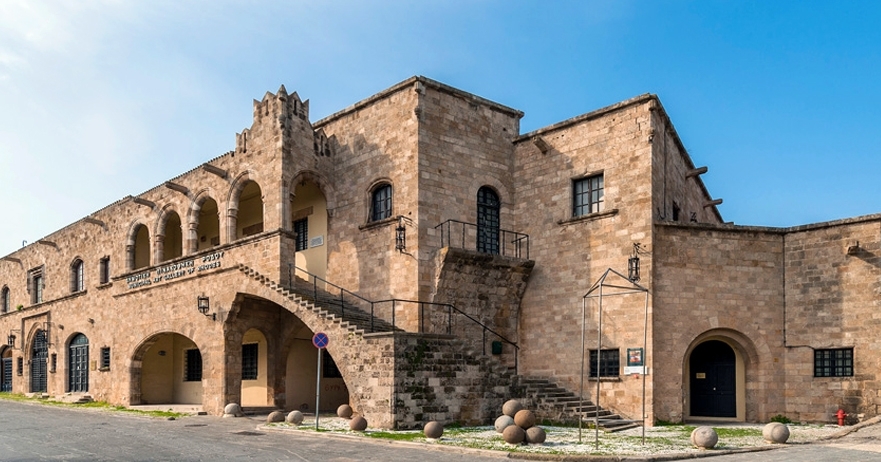
5. Rodini park- Rodini Park is a paradise of meandering streams and paths amidst oleander bushes, cypress, maple and pine trees. Rodini is reputed to be the site of the famed School of Rhetoric where prominent Greeks and Romans, including Julius Caesar, Cato the Younger, Cicero, Pompey, Brutus, Cassius and Mark Antony studied. Also in the park is a 3rd-century BC necropolis (cemetery) with tombs carved into the rock in the Doric-style as well as the Tomb of Ptolemy.

6. Acropolis / Temple of Apollo - Saint Stefens Hill known as Monte Smith, marks the site of the Acropolis af ancient Rhodes. The green and beautifully laid out archeological park contains the Hellenistic stadium, built in the 3rd century BC, where the athletic events of the Alioi Games took place. These are apart of the major festival of the ancient Rhodians held in honor of the God of sun, Helios.

7. Mandraki harbour- A stroll in the Mandraki, the small city port with the statues of the Rhodian deer at its entrance, is an experience not to be missed. Next to the Mandrakiis the marina with the traditional windmills, and the Fort of Saint Nicolas. The marina hosts visiting sail boats and yachts.
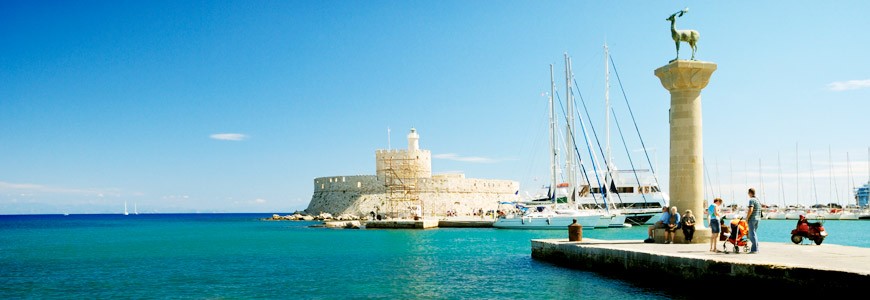
Things to do
Sailing & Windsurfing- Sailing & Windsurfing are very popular & well organised in Rhodes. The Open Sea Nautical Club of Rhodes which was founded in 1989 contributes highly to the development of sailing on the island, organising international sailing events yearly.
Scuba diving-The marine wealth of the island offers a unique experience for scuba diving lovers. Clear and warm waters, steep cliffs, hidden caves and shipwrecks create a perfect background for the observation of the marine fauna and flora of the island. The seas of Rhodes are recorded as the cleanest in the Mediterranean. Thus, diving into the “big blue” of Rhodes represents a unique experience for those who attempt it, provided they have prior training and special precautions are taken.
Cycling- Cycling is a popular sport in Rhodes and its history goes back many years. A Velodrome has existed in Rhodes at the Diagoras Municipal Stadium since 1930.
.jpg)
Water Park - The Waterpark is the biggest in Europe and the one on the island of Rhodes. Located in the popular resort of Faliraki, the Waterpark is situated on the costal road and is easily accessible. It offers remarkable and spectacular rides, unique splash pools and water slides. The Waterpark has been designed with all the latest facilities. The high class rides and top quality service offer something for fun lovers of all ages.
Cruise Visitors- The port of Rhodes can serve as a home port not only due to the island’s infrastructures and but also due to the port’s proximity to the well-known Greek islands (Mykonos, Santorini, Heraklion) and other attractive destinations in neighbouring countries. Having the largest number of charter flights of the surrounding area; with flights from all major European airports it is ideal location to get you from port to home.

Service & Facts
The Rodian gastronomy-
One can savour local delicacies in the many taverns and restaurants of the city, as well as high gastronomy in some restaurants which have attained international distinction and are recommended in international restaurant guides. At this crossroad of civilizations, the local cuisine has acquired elements from thethree continents that surround the island. It has borrowed from Asia, Africa and Europe but is above all Mediterranean. These various elements were selected, filtered and finally re-invented with a very distinct local character. Traditionally, the Rodian table was rich in variety. This tradition continues until today. Gourmets from all over the world have goodreason to visit Rodos as they have the chance to enjoy local specialties that brilliantly combine traditional and modern tastes: unforgettable delicate flavours, fresh fish and seafood, original fresh salads, magnificent meat dishes as well as the wide range of sweets and desserts made mainly of cereals, olive oil, nuts, fruits, honey and herbs.

The Rodian wines
The tasty dishes of Rodian cuisine find the perfect companion in the equally delicious wines from local wineries which, in keeping with the tradition from antiquity, produce quality wines that have received awards at many international wine exhibitions.
The sunshine, the mild climate and the advanced techniques of the local wine makers, all contribute to the excellent quality of Rodian wine. Today, old varieties have been revitalised and improved and new ones have been introduced - from the well known since ancient times Muscatel White, Athiri and Mandilaria, called Amorgiano in Rhodes, to the Muscadet, Trani, Asyrtico and, more recently, the Cabernet Sauvignon and Grenache rouge varieties.
The modern wine making techniques and the new varieties have improved Rodian wines but have not altered their balanced taste, the result of years of evolution. One sip will tell us that the Sun god, Helios, has once again worked his miracle!
Transportation
BY TAXI- Taxis in Greece are used very often as means of transport because they are quick. It can be more expensive than the bus, but in contrast to other cities abroad taxis in Greece are very cheap. In Rhodes there are a lot of stations where you can find a taxi, but there is also the possibility of using your telephone (radio taxi) to book one. In the second case, the taxi comes to you and you do not need to wait at the station in order to get one. However, it costs a little more. Taxis in Rhodes are blue with white roof tops. Even if there is a limit in the price that you will pay for each destination, taxis in Rhodes have meters that begin from a minimal charge. Of course do not forget that during the night there is double charge as in most Greek destinations if not all of them.
BY BUS- Buses in Rhodes offer the possibility to get around to many parts of the island in a pleasant and cheap way. You can buy tickets from the bus station or inside the bus, from the driver.
BY CAR- Rhodes is one of the largest islands in Greece and for this it is difficult for you to get around without a private car. You can bring your car with the boat, but it does not worth to do it. It is preferable, but also necessary to rent a car, for at least 2 days, so as you can explore the island comfortably and fast. In order to rent a car you can use our car hire service for the Greek islands. Having a car gives you the opportunity to visit places you could not see by bus. However always carry your driving licence with you and use your seat belt and never drive while you have drunk!!!
Where to stay
As this is among the most popular Greek destinations, hotels in Rhodes are spread in many parts of the island. The most tourist developed is the northern part of Rhodes, between Rhodes Town and the airport from one side and Rhodes Town and Lindos on the other. The southern part of the island is less developed. Nice places to stay close to Rhodes Town are Ialyssos, Theologos, Kallithea and Afandou. These places have large, organized beaches and many tourist facilities. Very popular is also Faliraki, but if you do not like all-night bars and clubs, you should pick another place for your stay.
Lindos is also a lovely choice, with picturesque architecture and amazing beaches to relax. If you like windsurfing, then the places for you are Ixia, Theologos and Prassonissi. In particular, Ixia, Ialyssos and Paradisi have many luxurious Rhodes hotels .
GOOD TO KNOW
Climate- There is usually a mild Mediterranean climate, with sunny (but dry) summers and mild winters. The sun rules the island for about 300 days every year. Early spring until late-autumn is almost an unbroken chain of sunny days and balmy nights. Light, cool breezes from north-northwest make it enjoyable even in July and August.
Language- The predominant language in Greece is Modern Greek (Demotike), with its origins dating back 3,500 years. English and French are also used as well as, to a lesser degree, German. Tourism is one of the largest trades in Greece, so visitors should get by with a basic understanding of any of these languages.
The main problem with a holiday in Greece is that you can feel totally illiterate. The Greek alphabet differs from the Roman one used in most Western countries, and not all street signs are written in both. But here are some useful phrases for you with the phonetic spelling.


















